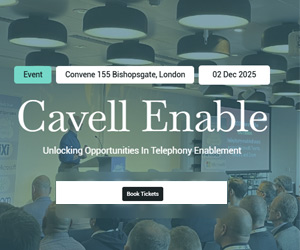Thomas Rodseth takes us through the options when it comes to self-service, bots and intelligent assistance.
Sometimes a technology takes an age to go mainstream. Other times it appears to arrive like a thunderbolt out of nowhere. Bots chose the high-impact option when they arrived in Q1 2016.
By mid-summer they were sliding down Gartner’s famous trough of disillusionment, accused of being over-hyped and inadequate in meeting expectations for the human touch.
This is often the case when the reality of using the new technology fails to deliver the promised benefits that were hailed at its launch.
However, bots are not an isolated trend. Nor are they the only type of digital assistance in town. In fact, they are part of a much larger wave of innovation in computing that has seen Artificial Intelligence (AI) move from the laboratory into everyday goods and services.
So-called cognitive computing is a new term for a new age in which everyday things in life are infused with a certain intelligence based on their ability to self-learn.
As far as the world of customer engagement and self service is concerned, this ability to recognise the context and intent of a customer’s need and then personalise that interaction comes from a mesh of technologies which have reached new levels of maturity in recent years.
Natural language processing, machine to machine learning, semantic search and speech recognition have been infused with degrees of AI capability. All have become more effective as a result.
As previously mentioned, bots are not the only ones to be built from such capabilities. In fact, within the hierarchy of intelligent assistance, bots sit at the bottom of the digital food chain. For instance, Amazon’s Alexa and IPsoft’s Amelia are much more impressive technical achievements.
But that is to miss the point of bots. They are more mass market in their appeal and construction. In fact, both Facebook and Microsoft offer bot-building frameworks. Over 11,000 developers flocked to the Messenger platform within a few months of Facebook’s announcement that they were now in the bot-building business.
Bots can be designed to run on ‘rails’ as opposed to more costly natural language processing logic. This makes them cheaper and quicker to build. Not a bad thing for testing consumer demand.
So, instead of being valued as being technical front runners, bots are special because they act as concierges on top of messaging platforms which now attract massive mobile audiences. This is their niche.
They are important because they point to another brave new future that is rapidly arriving. One in which the dominance of the desktop and browser is giving way to the adoption of the smartphone and messaging app.
For this growing demographic, bots are a great way to extend the functional value of their favourite messaging platform. They can add value across the engagement cycle, provide information throughout a buyer’s journey, enable the sale and payment of things and, after that, provide whatever ongoing support is required as a customer service tool.
That said, many brands and organisations will still have customers who do not match that type of online behaviour. Mobile browsing and apps are still dominant while a desktop and keyboard remains an important and trusted interface for other types of customers.
This is where more traditional intelligent assistance has flourished.
Often built around the well-known functionality of a simple search box, the virtual assistant allows customers to engage in a conversational style, to understand needs and retrieve relevant content from the array of knowledge sources they are plumbed into.
These solutions have been effective. In the context of customer service, demand for live assistance has been reduced dramatically as a result.
As a final point on the different flavours of intelligent assistance, there is one more category that has to be mentioned. These are typically voiced-based assistants such as Microsoft’s Cortana, Amazon’s Alexa and Google’s Assistant.
Why is this flourishing? Voice is faster than text. Hands-free interaction is sometimes the only option. Adoption rates are increasing, more voice searches are happening, brands are starting to see these services as new ways to connect with customers, and voice can be embedded into devices that do not require screens.
That final point is the reason Samsung bought VIV, a next-generation version of Siri. Their grand vision is to embed voice assistance into every Samsung device sold.
So where does this leave us on bots? Today we happily live in a world where we have accepted that smart automated engagement can successfully free up live resources to concentrate on some interactions where a person at the other end is still needed.
If you want to know more, please download the following white paper: Intelligent Assistants, Bots and Self-Service in the Contact Centre
Further information on this topic can also be found by visiting Puzzel.com
Author: Robyn Coppell
Published On: 9th Mar 2017 - Last modified: 17th May 2017
Read more about - Archived Content, Puzzel






























